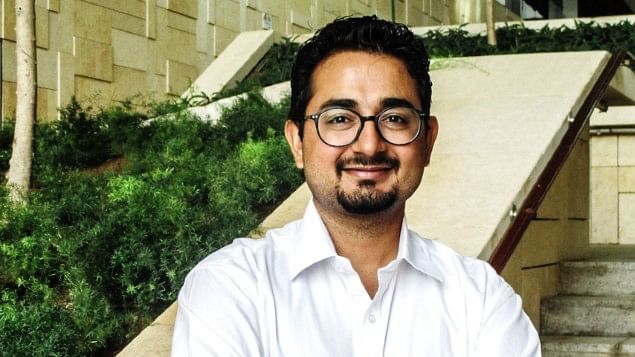
Professor Pankaj Khanna
Credit: IIT-Gandhinagar official website
An assistant professor of Earth Sciences at the Indian Institute of Technology, Gandhinagar (IITGN), Pankaj Khanna has joined the offshore phase of the International Ocean Discovery Program (IODP's) Hawaiian Drowned Reefs Expedition (“IODP Expedition 389”) as a research scientist and sedimentologist from India.
The expedition which started from August 29 will be under way till November 1, IITGN said in a release.
The institute stated, "Khanna is part of a 31-member team of leading research scientists from various parts of the world who will be investigating the links between global sea-level change and global climate change by drilling and studying a series of fossil coral reefs surrounding the island of Hawaii to learn more about our planet."
IODP is an international marine research collaboration of 21 countries, including India, which was established to study the secrets of the Earth, structure, and dynamics by collecting and studying the seafloor sediments and rocks, and monitoring sub-seafloor environments.
The European Consortium for Ocean Research Drilling (ECORD), a part of IODP, is responsible for implementing mission-specific platforms, like the current “Expedition 389” for drilling drowned reefs offshore Hawaii.
The institute said that a scientific team, led by co-chief scientist professor Jody Webster from the University of Sydney and professor Christina Ravelo from the University of California will be onboard MMA Valour, a vessel equipped with the state-of-the-art submersible drilling system - Benthic Portable Remotely Operated Drill (PROD5).
They will core in up to 11 locations to a maximum thickness of 110 metres below the seafloor, in a series of fossil coral reefs surrounding the island of Hawaii. Covering important time periods in the Earth’s climate history, the information contained in these natural fossil reef archives will help scientists reconstruct sea-level change at a much higher resolution.
The purpose of the expedition is to measure the extent of sea level fluctuations over the past half a million years. It will also investigate sea level and climate changes through time, and how coral reefs respond to abrupt sea level and climate changes. Finally, it aims to improve scientific knowledge of the growth and subsidence of Hawaii over time.